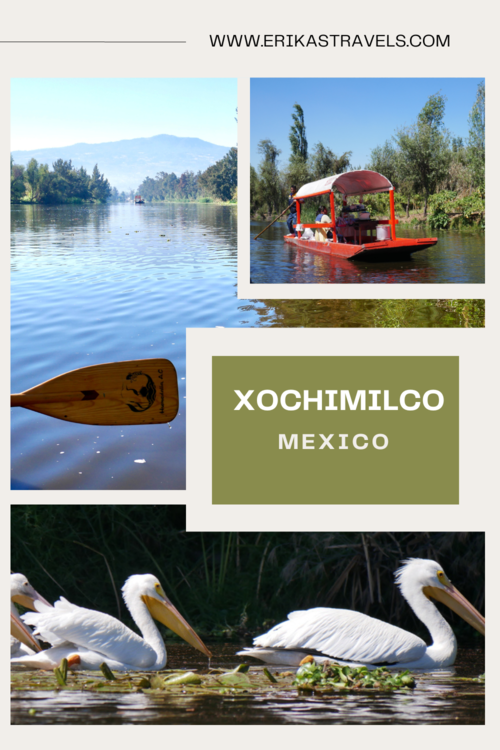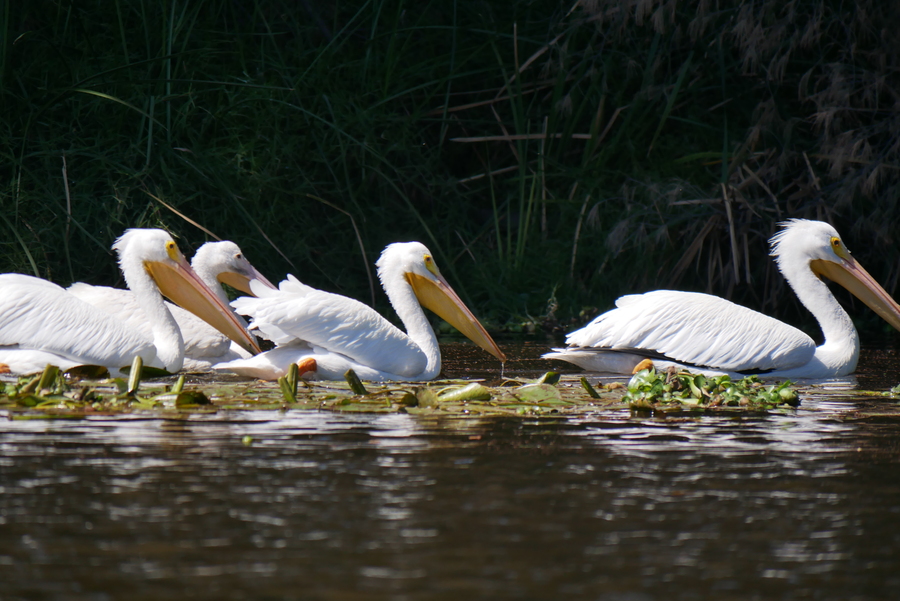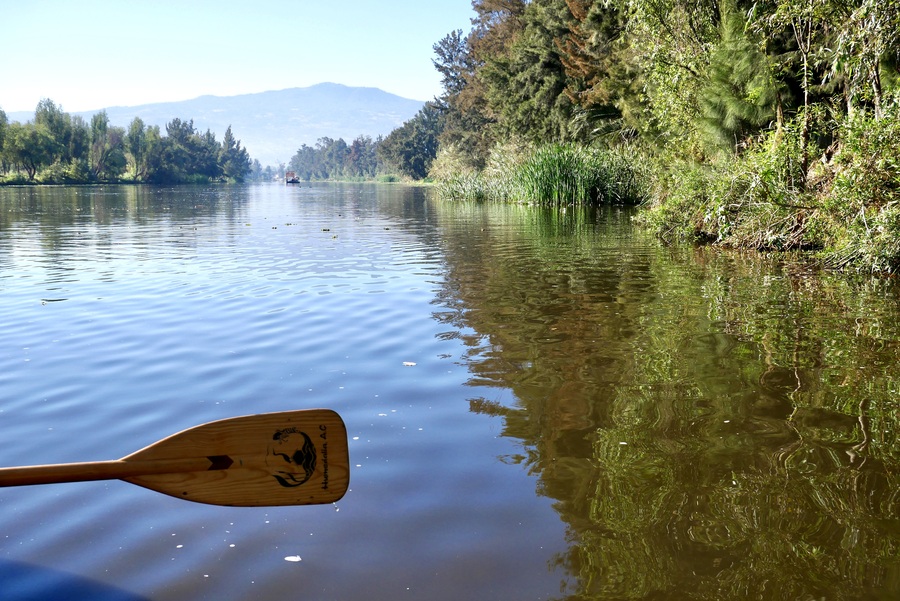
Guide to the Xochimilco Canals in Mexico City
Xochimilco is an oasis of tranquility in one of the world’s largest and most congested cities.
The green lungs of Mexico’s smog-choked capital, its canals and waterways are the final vestiges of a vast lake system that once flooded the Anahuac Valley.
The maze-like wetland and its floating farms are inextricably linked to the rise of Mexico City.
And still today, they are vital to the function of the modern metropolis.
The area is home to a diverse array of plants and animals, while providing food for Mexico City’s ever-expanding farm-to-table culinary scene.
The Canals of Xochimilco Mexico
Xochimilco is best known as a place where tourists drink cocktails while drifting through Aztec-era canals in colorful wooden boats called “trajineras.”
Dubbed “the Venice of Mexico,” it is home to a system of canals that preserves a pre-Hispanic method of agriculture and farming.
Xochimilco became a UNESCO World Heritage site in 1987, alongside the Templo Mayor in downtown Mexico City. Its waterways are home to hundreds of migratory and native bird species.
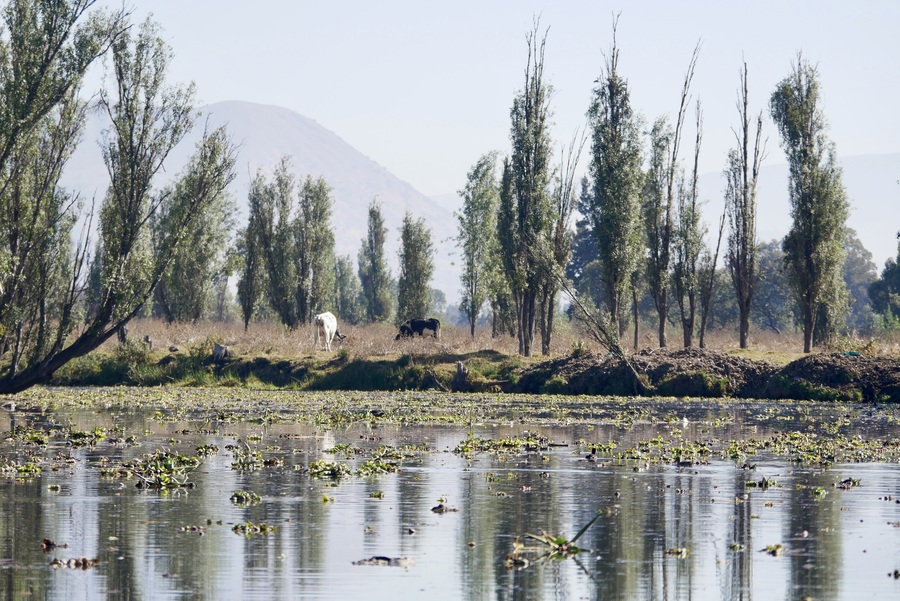
With its colorful trajineras, abundant wildlife, and traditional floating gardens, a tour around the Xochimilco canals is a truly unforgettable Mexico City highlight.
A Brief History of Xochimilco Mexico
The history of Xochimilco runs much deeper than cocktails and party boats.
The artificial islands in Xochimilco date back to the 11th century. Though they are newer than the ancient ruins of Teotihuacán outside of Mexico City, they are nonetheless one of the area’s most important pre-Hispanic landmarks.
Historically, the Aztecs started building islands made from reclaimed land. They used the canals to transport their harvest. In doing so, they were able to grow enough crops to feed the entire population of their capital city, Tenochitlán.
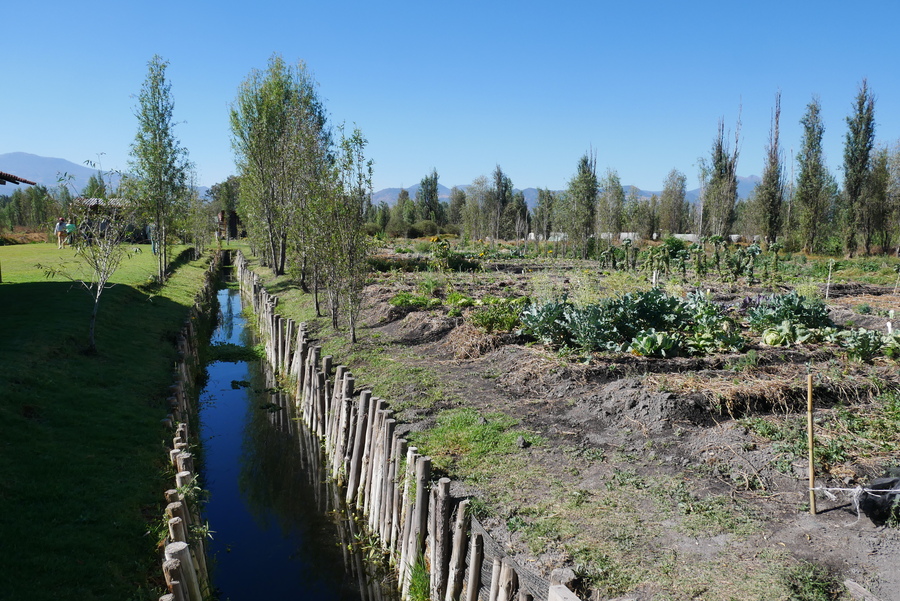
When the Spanish arrived, they proceeded to drain many of the area’s lakes—eventually building a sprawling colonial city atop the largely dried-out lake bed.
That colonial settlement, now known as Mexico City, was founded upon the original ruins of Tenochitlán. It has grown into the fifth largest metropolis on Earth.
Meanwhile, the vast lake is now only a shadow of its former self.
However, its working farms continue to sustain the modern city like they have done over the centuries.
The Chinampas
In the Náhuatl language, Xochimilco means “flower field.” Its name comes from the artificial floating gardens, called “chinampas” that cover the remaining wetlands of Lake Xochimilco.
The process of building chinampas allowed the Aztecs to reclaimed arable earth from an area that was once unconducive to farming.
With its network of canals and artificial islands, Xochimilco illustrates the ways in which the central Mexico’s pre-Hispanic inhabitants were able to build a thriving civilization atop water.
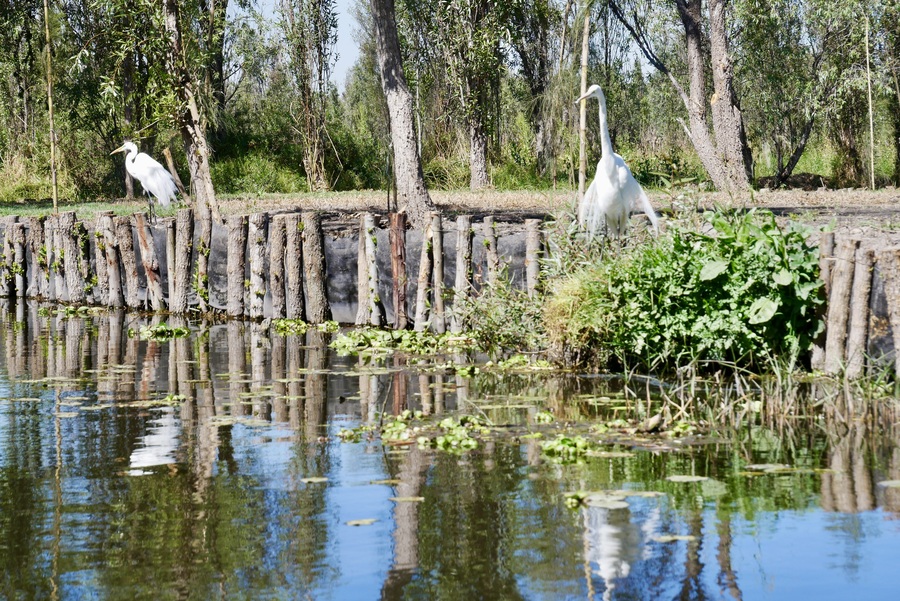
The chinampas of Xochimilco consist of layer upon layer of human-engineered “rafts.” When the first layer of rafts began sinking, farmers tied another raft layer to the same location, in a continual cycle.
This process is still in use today.
(Thus, though the process has remained in place for centuries, the original Aztec-built chinampas now lie at the bottom of the lakebed).
Visiting the Canals of Xochimilco Mexico
Visiting the floating gardens of Xochimilco is one of the top things to do in Mexico City.
There are two main ways to experience the Aztec-era islands and canals: festive trajinera tours, and low-key canoe tours.
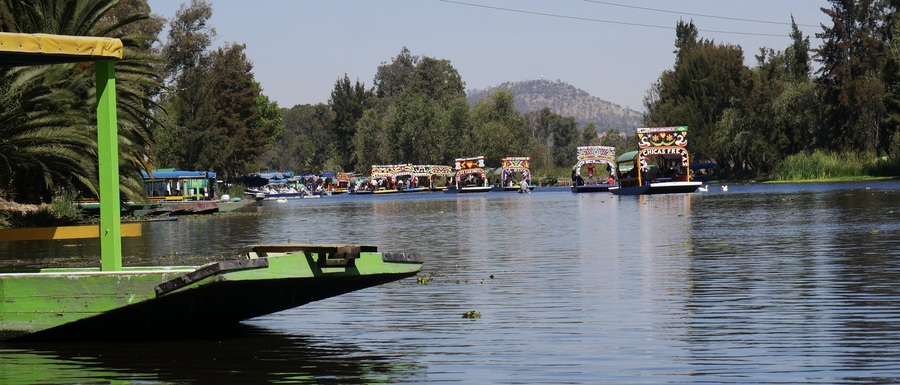
One experience allows you to learn more about the area’s history and biodiversity, while the other grants you an opportunity to revel in its lively atmosphere.
Either way, the floating gardens of Mexico City are a fascinating place to visit.
-
Airbnb Experience Canal Tour
Instead of drifting down the main canal in a trajinera, Dan and I joined an AirBnb experience that would give us a more intimate and informational glimpse into the area.
The tour turned out to be an excellent choice.
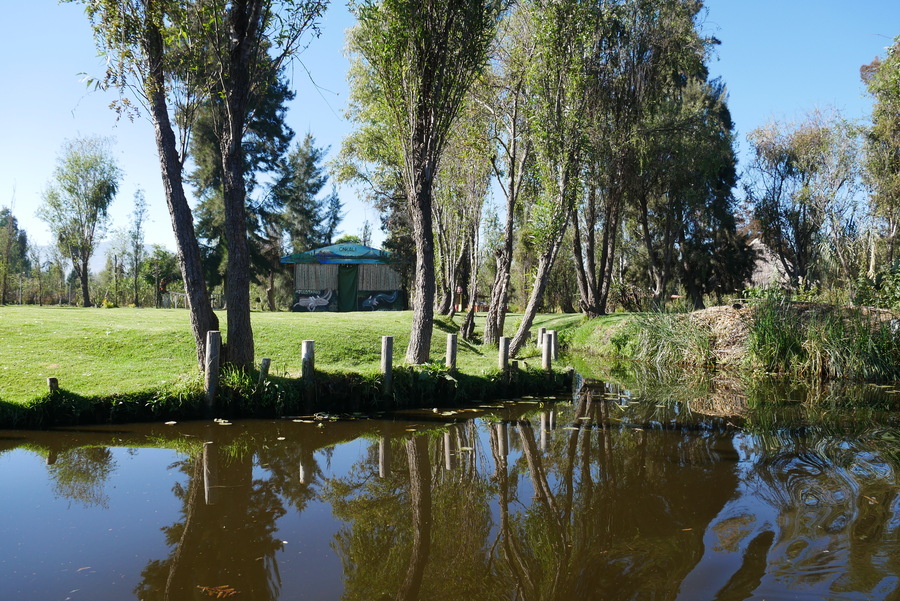
Our morning tour of the Xochimilco canals included a canoe adventure through the gentle waterways, followed by lunch on a working farm. Throughout the tour, our guide explained the area’s history and pointed out its flora and fauna.
Led by a biologist-turned-guide who was passionate about preserving the world heritage site for future generations, the tour was truly a highlight of our Mexico City itinerary.
-
Trajinera Tour in Xochimilco
Traveling through the Xochimilco canals on a trajinera gives you a completely different experience than the one I had.
Instead of listening to a soundtrack of chirping birds, you’ll float to the sound of Mariachi music. And instead of walking through rows of lettuce on a working farm, you’ll probably be throwing back a few coronas.
Before boarding your boat, you can buy soft drinks, beer and food from nearby vendors. You can also hire live music and entertainment to accompany you on your journey.
Since Trajineras are prohibited from traveling through the narrow channels of the chinampas, they are mostly relegated to the main canal.
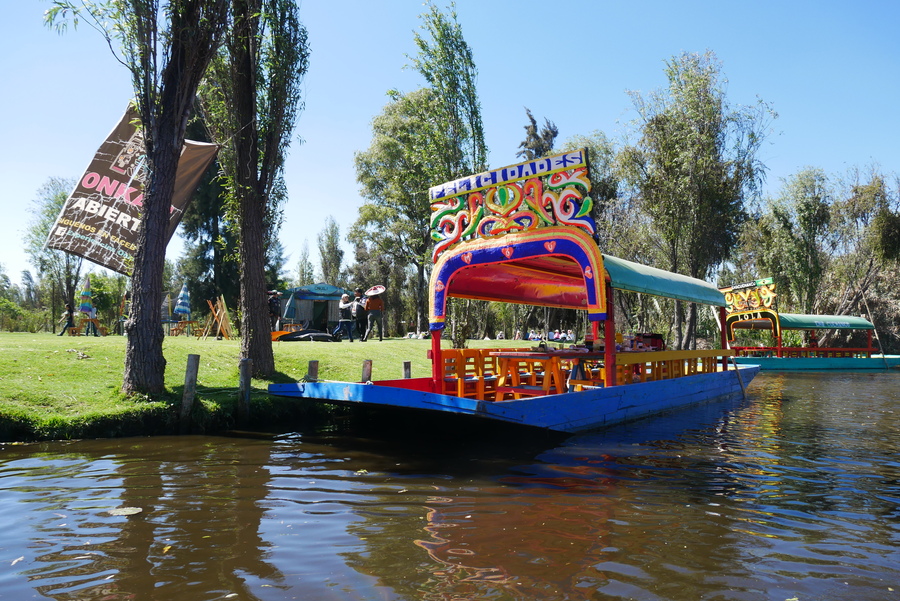
Although you can pretty much take a trajinera ride anytime, the activity is particularly popular among locals on Sundays—something to consider depending on whether you are looking for a party or a tranquil escape.
-
Visiting Xochimilco Independently
If you choose to travel to the Xochimilco canals independently, you should plan to arrive early to secure a boat. A trajinera ride costs around $500MX per hour, per boat.
Most trajineras seat as many as 20 people on wooden bench tables, so the adventure can be quite economical if you have a large group.
The Island of the Dolls (Isla de las Muñecas)
Aside from its maze of working farms, some people choose to visit the somewhat creepy Island of the Dolls in Xochimilco (known in Spanish as Isla de las Muñecas).
The placement of the dolls is the result of a tragedy that unfolded in the 1950s, when a man named Julian Barrera found the body of a drowned child in the canal. He was so troubled by the discovery, that he decided to hang the young girl’s doll in a tree. This gesture was meant to ward off evil spirits and acted as a sort of memorial for the child.
Over time, Barrera continued to adorn the island’s trees with dolls.
Despite its unsettling appearance, the doll-strewn island has become a tourist attraction in Xochimilco.
The Future of Xochimilco
The future of Xochimilco and its wildlife lies in the balance.
Eleven percent of Mexico’s biodiversity can be found in Xochimilco’s canals. The area is a wonderful destination for birdwatchers and wildlife-lovers.
During our tour of the waterways, we saw three types of herons, pelicans, gallinules, ibis’, and vermillion fly-catchers.
We also learned that its waters are home to snakes, tilapia, carp and axolotls—small salamanders that are endemic to the valley of Mexico.
Axolotl numbers have declined rapidly in recent decades. The revered amphibians now face critical endangerment due to the deterioration if their habitat.
While Lake Xochimilco now covers only a fraction of its Aztec-era surface area, its remaining waters face high levels of environmental degradation.
The once-pristine waters have become increasingly polluted over time, due in part to illegal island settlers dumping sewage into the canals.
In addition, groundwater pumping to meet the sprawling city’s insatiable demand for water has largely depleted the lakes’s aquifers. The Mexican government has resorted to pumping in water from a nearby water treatment plant in Cerro de la Estrella to maintain lake levels.
How to Get to Xochimilco
We took an Uber to get from Condesa to Xochimilco. The ride cost us about $10USD in total and took roughly 40 minutes.
If you prefer to navigate cities using public transportation, you can head to Taxqueña Station at the end of the blue line. From there, the green line will take you to the Xochimilco canals. The metro is relatively safe, just be aware of pickpockets and stay vigilant (like you would in any other major city around the world).
Metro tickets are quite cheap and will only set you back $5MXN per journey.
Many tours of Xochimilco include transport to and from the canals.
Where to Stay near Xochimilco
Staying near Xochimilco isn’t really necessary, since the canals are within striking distance of popular Mexico City neighborhoods—including Roma, Polanco, Condesa, and Centro.
Still, spending the night nearby grants you unparalleled access to Xochimilco in the early morning and evening.
Coyoacan, home to Frida Kahlo’s Casa Azul, is one of the closest neighborhoods to Xochimilco. Top places to stay in Cayoacan include Villa Alfonsina (budget) and Casa Tuna (midrange).
Best Time of Day to Visit Xochimilco
The best time of day to visit the Xochimilco canals will depend on whom you ask. Are you looking to escape the crowds and enjoy a serene morning on the water? Are you hoping for a lively evening out with friends? Or are you a photographer seeking to capture the diverse bird life in the area?
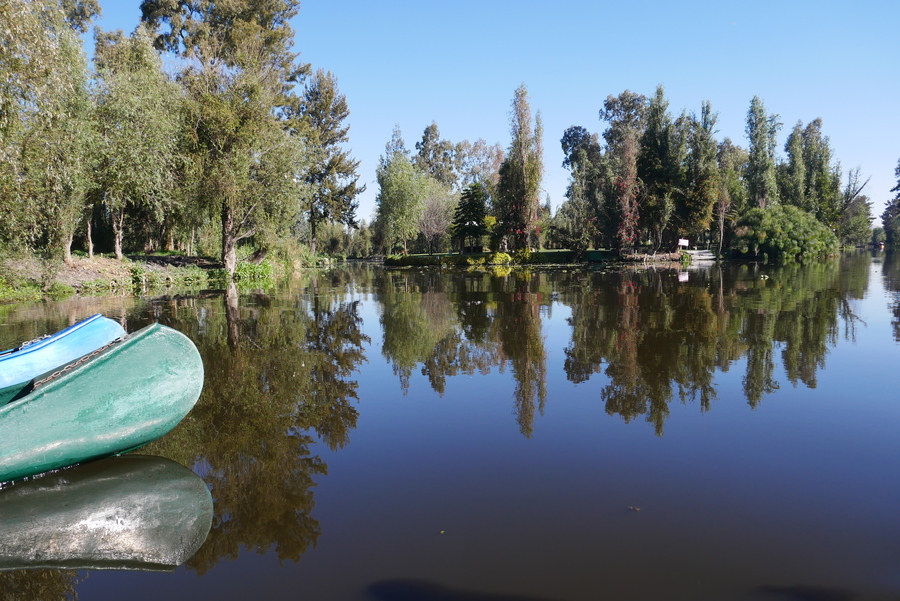
We found that visiting the canals in the morning gave us the experience that we craved. We saw plenty of wildlife, escaped the heat, and experienced the serenity of floating through the canals in relative quiet.
If a party experience is what you’re looking for, you’ll want to visit on a Sunday afternoon.
****
The canals of Xochimilco Mexico are much more than just an escape from the hustle and bustle of the city. They are a refuge for native plants and animals. An agricultural center that provides much of Mexico City’s fresh produce. A gathering spot for families and nature enthusiasts.
And a reminder of pre-Colombian ingenuity in the Americas.
_______________________________
DID YOU ENJOY THIS GUIDE TO THE CANALS OF XOCHIMILCO MEXICO? PIN IT!
